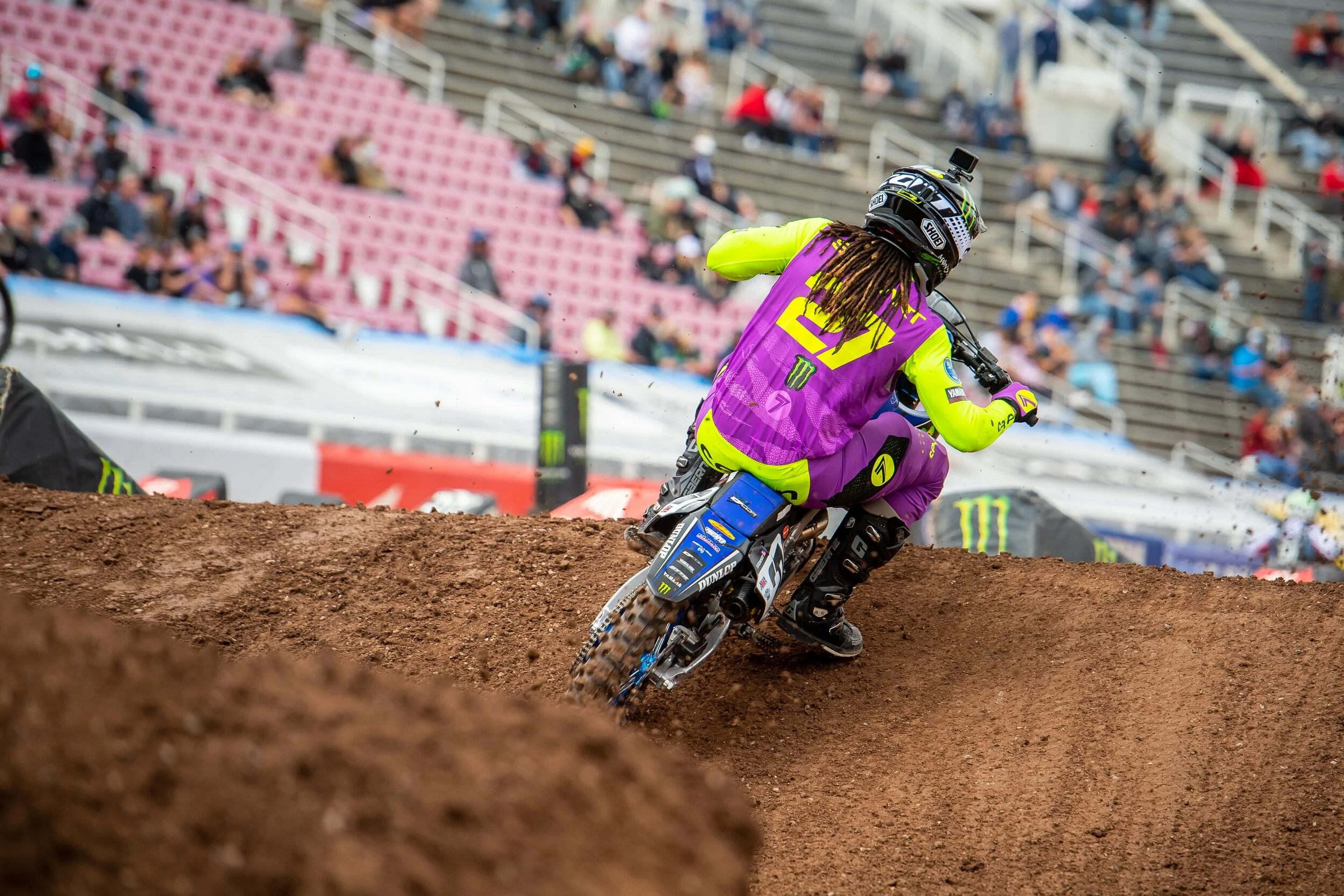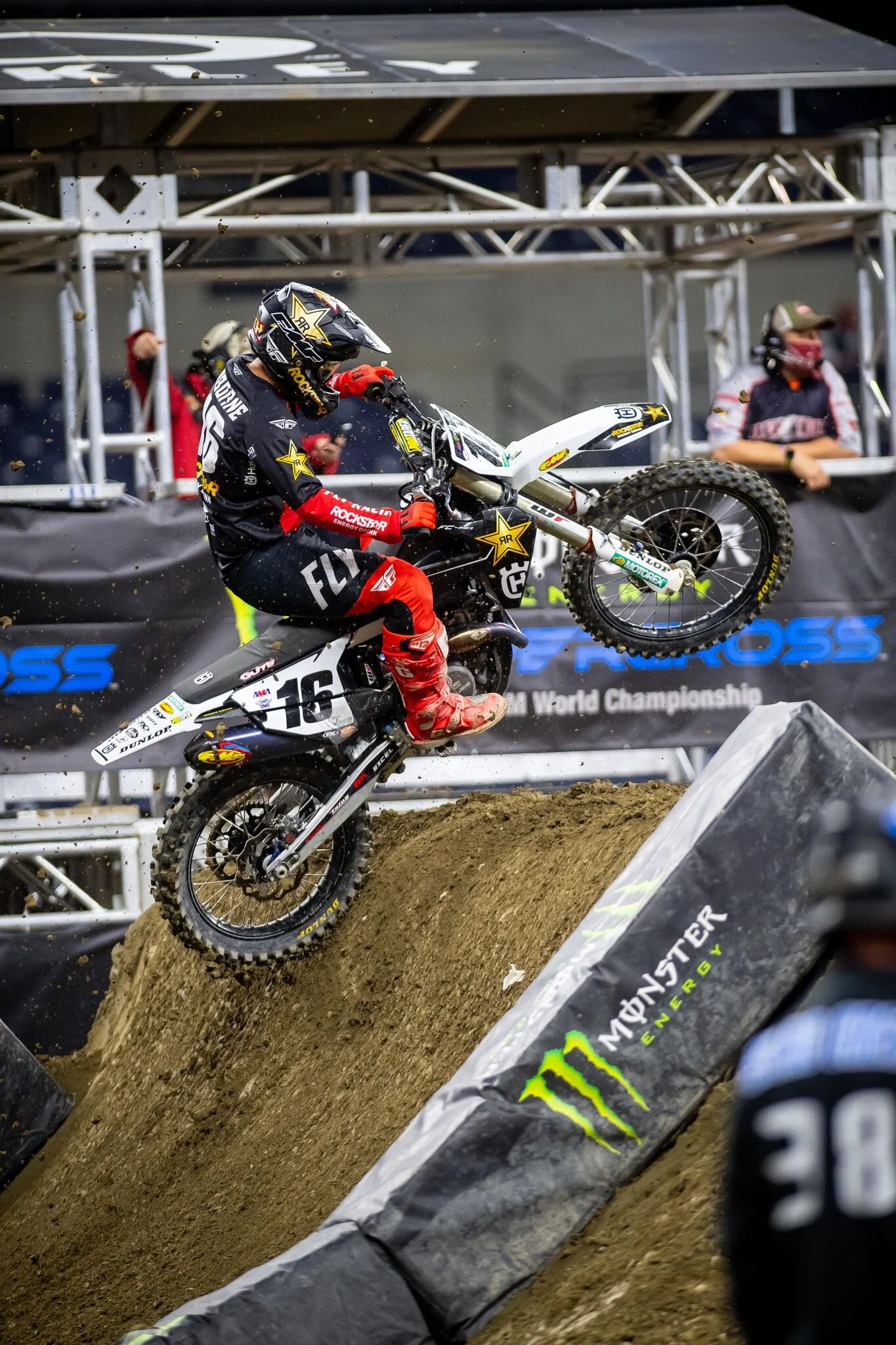The one question I get sent to my email account the most is about suspension. Suspension is a tricky thing and can be somewhat difficult to figure out for the average rider. These descriptions below may seem redundant to all of you riders out there that are familiar with suspension, but I wanted to cater to the novice type rider, to get him or her familiar with adjusting their suspension to achieve the most comfortable ride possible.
Adjustments are there for you to “customize” your set up and feel on the track. The compression and rebound damping adjustments on your machine are known as your “clicker” adjustments. Making the correct changes with your clickers will make your bike handle better and give you a friendlier riding experience. Clickers control the amount of oil flow that is allowed to bypass your suspension valving stack. They work like a fuel screw and can fine tune your suspension.
A shock has both low-speed and high-speed compression adjustments. The low-speed adjuster controls the damping at low shock speed velocities like rolling whoops and acceleration bumps. The high-speed adjuster controls damping when the shock is moving at high speeds like g-outs, jump faces and effects the ride height of the bike (similar to sag). Before you start messing around with clicker adjustments here are some things you should do first.
Check where your clickers are set at and write them down.
Start out with recommended stock settings first for baseline.
Adjust your tire pressure for the type of riding and terrain. (You can check the tire pressure bible on keeferinctesting.com for your type of tire).
Make sure you have the correct spring rate on your bike for your weight/ability and set your sag.
Bleed the air out of the forks every time you ride, if you have a spring fork or an AER fork.
If using air forks, makes sure to check air pressure.
Start off by riding your machine with your clickers set in the stock position. This will give you a good base setting of how your bike handles. Ride only a few laps (2-4) at a time when you try new settings so you will not be second guessing your initial impression of each adjustment. If you stay out too long you will start to second guess your initial thoughts. Ride the same lines every lap so you get a feel for the changes you make and do not ride around the bumps you are trying to test on. Doing this will alter your perception of how well your stuff is working. Cheating doesn’t nothing for you! This will only hurt you in the long run, so buck up and take the rough line! Make changes to your clickers 1-2 “clicks” at a time and one adjustment at a time (rebound or compression). Changing compression/rebound on the fork and shock at the same time can confuse you as to what setting is actually improving your machine. So just chill down and do one adjustment at a time. Soft terrain usually requires more compression damping (stiffer). The bumps are bigger and spaced further apart so they can require more rebound damping to minimize kick (stiffer). If there is a hard base underneath, the bumps will usually be closer together and square edges will develop. In this case a softer setting or a faster rebound can be used. If you are riding in deep sand your compression and rebound settings should be stiffer (slower) than recommended stock settings that are in your manual. You can also run your front end higher (drop your fork height) and the rear end lower (higher sag number) if possible for stability, to combat any twitchiness your bike may have.
On hard pack dirt it is better to adjust the rebound faster while still maintaining control and bottoming resistance. Try to find a happy medium between bottoming and comfort. It’s ok to bottom out once or twice a lap, so don’t freak out if you bottom out once in a while. That doesn’t mean you need to stiffen your suspension if you’re bottoming out. All of your suspension is meant to be used, that’s why it’s there, so let it do its job. If you are bottoming out more than that you would adjust your compression clickers to a stiffer setting. Adjusting your rebound damping to a stiffer setting will help, if your bike feels unstable (loose feel) or if you are blowing through the stroke on jump faces. While it’s common to stiffen (slower) the shock rebound when your bike kicks over bumps (because you feel like it’s bucking you), many times it is caused by compression that is too stiff. Try going one or two clicks softer/faster on rebound to see if it soaks up the bumps and calms the chassis down in that area of the track. Always ride within your means when testing and try not to push 110%. Let the pros do that!
Again, be patient. Designate a day where you just play around with your settings and get familiar with your bike. I feel like suspension tuning is kind of like dating. You must learn your partner before you can get married right? Getting a balanced, comfortable suspension setting is no different than dating. Get to know your bike before you decide to dump it and blame it all on her. Maybe its you? Maybe you didn’t give it a chance? Play around and see what works for you. If the rear of your bike kicks to the side, the cause can be that it’s too stiff of a rebound setting or too stiff of a compression setting. Again, try one adjustment at a time. Lack of traction (wheel spin) on acceleration bumps can usually be improved by softening the low-speed compression on the shock or speeding up the rebound, so the rear tire follows the ground better. Keep in mind that faster riders generally prefer stiffer settings to maintain control at speed (performance) while slower riders prefer softer settings for comfort.
When it comes to air forks messing with the air pressure can be tricky. Just to let all of you know that 2 psi is one full spring rate. How many times have you changed a spring out at the track? Not very much right? Unless you are very light or extremely heavy, the stock air pressure settings from the factory are usually a great place to start and keep within 1 psi (softer or stiffer). Adjusting your compression and rebound clickers on air forks is much easier and a simpler way to dial in these types of forks. Air pressure will change throughout the day as heat builds up, so if you are checking your air pressure in the middle of the day, make sure the fork is cooled down to ambient air temperature. If you like what you read here, listen to the Rocky Mountain ATV/MC Keefer Tested Podcast and listen to some more tricks that can help you get more cozy on the track!
Follow some of these easy steps and I can guarantee you that you will get your set up even better and enjoy riding that dirt bike of yours even more. If you have any questions you can email me at kris@keeferinctesting.com as we are here to help.



